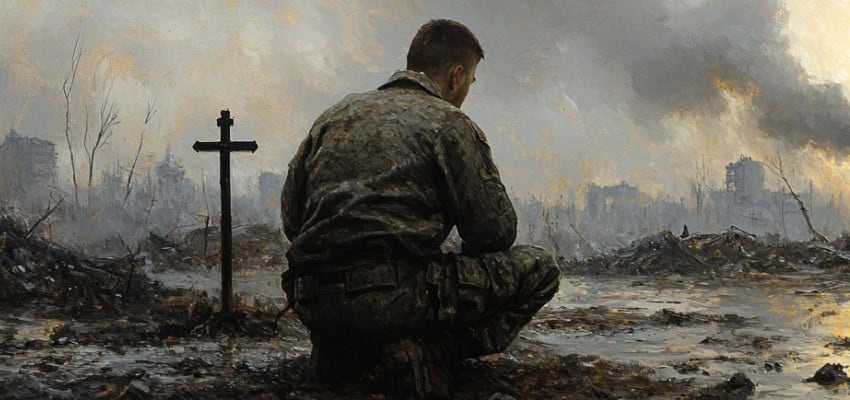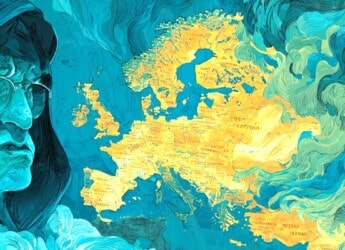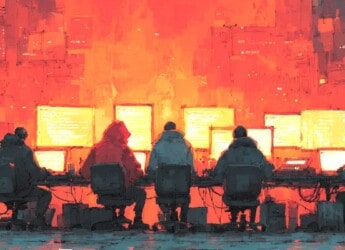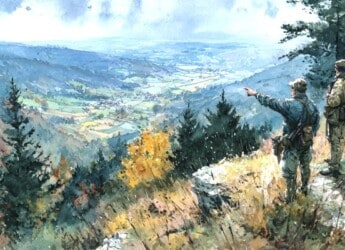Editor’s Note: This article presents a narrative summary and analysis of the Russo-Ukrainian War update issued on April 19, 2025. Drawing upon detailed observations provided by the Institute for the Study of War, it explores recent battlefield dynamics, diplomatic overtures, and information warfare tactics shaping the evolving conflict landscape. Designed for a professional readership, this report emphasizes the implications of Russia’s unilateral ceasefire declaration, Ukraine’s military responses, and the broader geopolitical consequences for international mediation efforts.
Proposals for temporary ceasefires during major religious holidays, especially Orthodox Easter, have recurred throughout the Russo-Ukrainian conflict. While these gestures are often presented as opportunities for humanitarian relief or confidence-building, they have seldom resulted in meaningful pauses in hostilities. Instead, such truces are frequently marred by immediate violations and serve as platforms for information warfare, with each side seeking to portray the other as untrustworthy or insincere. This recurring dynamic underscores the challenges of leveraging symbolic gestures for substantive diplomatic progress.
For those seeking to grasp the full scope of this evolving landscape, the complete updates from the Institute for the Study of War serve as an invaluable resource.
Content Assessment: Easter Truce or Tactical Ploy? Russia’s Ceasefire Maneuver and Ukraine’s Strategic Responses
Information - 93%
Insight - 91%
Relevance - 91%
Objectivity - 92%
Authority - 94%
92%
Excellent
A short percentage-based assessment of the qualitative benefit expressed as a percentage of positive reception of the recent article from ComplexDiscovery OÜ titled, " Easter Truce or Tactical Ploy? Russia’s Ceasefire Maneuver and Ukraine’s Strategic Responses."
Background Note: ComplexDiscovery’s staff offers distinctive perspectives on the Russo-Ukrainian war and Middle Eastern conflicts, informed by military experience on the West German, East German, and Czechoslovakian border during the Cold War and in Sinai as part of Camp David Accord compliance activities. This firsthand regional knowledge has been further enhanced by recent staff travels to Eastern European countries, including Estonia, Finland, Latvia, Lithuania, and Poland. These visits have provided up-to-date, on-the-ground insights into the current geopolitical climate in regions directly impacted by the ongoing conflict.
Combined with cybersecurity, information governance, and eDiscovery proficiency, this multifaceted experience enables comprehensive analysis of these conflicts, including the critical impact of cyber warfare, disinformation, and digital forensics on modern military engagements. This unique background positions ComplexDiscovery to provide valuable insights for conflict-related investigations and litigation, where understanding the interplay of technology, data, and geopolitical factors is crucial.
Russo-Ukrainian Conflict Update*
Easter Truce or Tactical Ploy? Russia’s Ceasefire Maneuver and Ukraine’s Strategic Responses
ComplexDiscovery Staff
In a move shrouded in both strategic calculation and public relations, Russian President Vladimir Putin declared a unilateral 30-hour ceasefire from 1800 Moscow time on April 19 to 0000 on April 21, ostensibly in observance of Easter. Ukrainian President Volodymyr Zelensky countered with a proposal to expand the truce into a comprehensive, unconditional 30-day ceasefire—an offer tethered to the prerequisite that Russia genuinely halts all hostilities. Despite these overtures, the truce has seen persistent frontline violations, underscoring skepticism about Russia’s sincerity and illuminating the ongoing complexities obstructing genuine diplomatic resolution.
Zelensky’s reciprocal proposal signals Ukraine’s willingness to embrace a longer cessation of hostilities, contingent on Russian compliance. However, within hours of the announced ceasefire, Ukrainian military sources reported continued Russian assaults and shelling, casting doubt on the Kremlin’s commitment. The underlying concern is that Russia appears to be leveraging the ceasefire not for humanitarian or peace-building purposes, but as an informational tool to generate pretexts for blaming Ukraine for future escalations.
This posture reflects a consistent Kremlin narrative that invokes the need to resolve the “root causes” of the conflict—a euphemism long employed to advocate for NATO’s withdrawal from Eastern Europe and regime change in Kyiv. Russian officials have continued to reject broader U.S. and Ukrainian proposals for a lasting ceasefire, such as the 30-day cessation first floated jointly by Washington and Kyiv on March 13. Moscow’s rejection, coupled with continued frontline activity, undermines the credibility of its peace overtures.
Reports from the April 17 Paris peace discussions reveal that Russia has demanded further conditions, including the controversial and ambiguous demand for Ukraine’s “denazification”—a term synonymous in Russian rhetoric with eliminating perceived anti-Russian sentiment and toppling the current Ukrainian government. U.S. President Donald Trump’s public expressions of impatience, including a warning that the U.S. might abandon mediation efforts, hint at a critical juncture in Western diplomacy.
On a more tangible front, the day also marked the most extensive prisoner of war (POW) exchange since Russia’s full-scale invasion began. Ukraine secured the return of 277 servicemen from various branches, while Russia claimed parity in the exchange and an additional transfer of wounded personnel. The United Arab Emirates facilitated the exchange, highlighting its emergent role as a mediator in the conflict.
Militarily, the situation on the ground remained tense and dynamic. Ukrainian forces achieved incremental advances near Pokrovsk, while Russian forces progressed in sectors around Toretsk and Pokrovsk. Geolocated imagery confirmed Russian gains in Novotoretske and Myrolyubivka, signaling effective company-sized mechanized assaults. Meanwhile, Ukrainian counteractions, including drone strikes that destroyed logistical assets like a Russian train in Pokrovsk, reflect Kyiv’s adaptability in asymmetric warfare.
Russian forces continued their pressure across the eastern axis, particularly in Luhansk and Donetsk Oblasts. In the Kupyansk direction, offensive operations persisted without confirmed gains, though reports suggest contested zones remain volatile. Further south, around Chasiv Yar and Toretsk, Ukraine faced repeated assaults. Notably, Russian tactics included the deployment of motorcycle-borne infantry, used for rapid field assaults and logistical support—a tactic indicative of evolving Russian approaches to mobile warfare.
In the south, Russian operations in Zaporizhia and the Donetsk axis pressed forward without securing new territory. In Pokrovsk, Ukrainian units inflicted substantial material and personnel losses on Russian attackers, reportedly destroying nearly 100 motorcycles and dozens of armored vehicles in a single engagement. These engagements underscore the high-intensity attritional nature of fighting in these contested zones.
Simultaneously, the Russian Ministry of Defense claimed without evidence that Ukrainian forces had conducted strikes against energy infrastructure in Russia and occupied territories, despite the Kremlin’s own cessation of targeting similar Ukrainian facilities. This pattern of unverified accusations aligns with Russia’s broader information strategy: to depict Ukraine as unwilling to uphold humanitarian truces, thereby justifying renewed offensives or diplomatic withdrawal.
In the air domain, Russia executed a significant drone and missile strike campaign on April 18–19, utilizing Iskander-M and Onyx systems alongside Shahed drones. Ukraine’s air defenses intercepted a notable portion of these attacks, but damage to infrastructure in Kharkiv, Odesa, Sumy, Donetsk, and Zaporizhia oblasts was reported. These aerial operations maintain pressure on Ukrainian logistics and civilian morale, consistent with Russia’s hybrid strategy of kinetic and psychological warfare.
No significant developments were noted in Belarus or Dnipro, while partisan activity in Crimea—specifically the evacuation of Black Sea Fleet officers’ families—hints at growing internal instability and concern over the region’s security.
As the conflict enters a precarious new phase shaped by tactical de-escalation gestures such as the Easter truce, strategic mistrust remains pervasive. Both sides continue to recalibrate their positions amidst ongoing international mediation attempts. With the United States poised to reassess its peacemaking role, the question looms: will fleeting ceasefires evolve into lasting peace, or merely serve as interludes in a protracted war?
As a leading source for cybersecurity, information governance, and legal discovery insights, including international investigations and litigation, ComplexDiscovery OÜ recognizes the importance of awareness regarding alleged and documented criminal acts, particularly in the context of the Russia-Ukraine conflict. While we, following the lead of the Institute for the Study of War (ISW), do not provide detailed coverage of war crimes in our primary reports, we encourage professionals within the eDiscovery ecosystem to stay informed about these activities. This awareness is crucial for understanding potential future legal actions and responsibilities.
Detailed Reporting with Maps for April 19, 2025, from the ISW – Mouseover to Scroll
Russo-Ukrainian War April 19 2025 - UpdateReview the Detailed Reporting and Maps PDF
About the Institute for the Study of War Research Methodology
ISW’s research methodology relies on both primary and secondary sources, enabling researchers to develop a comprehensive understanding of the situation on the ground. In order to analyze military and political developments in any given area, ISW’s research analysts must wholly understand the systems of enemy and friendly forces. They must also understand the population demographics, physical terrain, politics, and history of that area. This lays the analytical foundation for understanding the reasons for particular developments and fulfilling their assigned research objectives. ISW analysts also spend time in places like Iraq, Afghanistan, and elsewhere in order to gain a better understanding of the security and political situation and to evaluate the implementation of current strategies and policies. Their researchers compile data and analyze trends, producing a granular analysis of developments in areas of research, producing an accurate, high-resolution, timely, and thorough picture of the situation. ISW’s research methodology guarantees its success and commitment to improving the nation’s ability to execute military operations, achieve strategic objectives, and respond to emerging problems that may require the use of American military power.
About the Institute for the Study of War
The Institute for the Study of War advances an informed understanding of military affairs through reliable research, trusted analysis, and innovative education. They are committed to improving the nation’s ability to execute military operations and respond to emerging threats in order to achieve U.S. strategic objectives. ISW is a non-partisan, non-profit, public policy research organization.
Learn more, get involved, and contribute today.
Additional Reading
- From Dissent to OSINT? Understanding, Influencing, and Protecting Roles, Reputation, and Revenue
- [Annual Update] International Cyber Law in Practice: Interactive Toolkit
- Data Embassies: Sovereignty, Security, and Continuity for Nation-States
Assisted by GAI and LLM Technologies
* Sourced and shared with direct expressed permission from the Institute for the Study of War (ISW).
Source: ComplexDiscovery OÜ


























